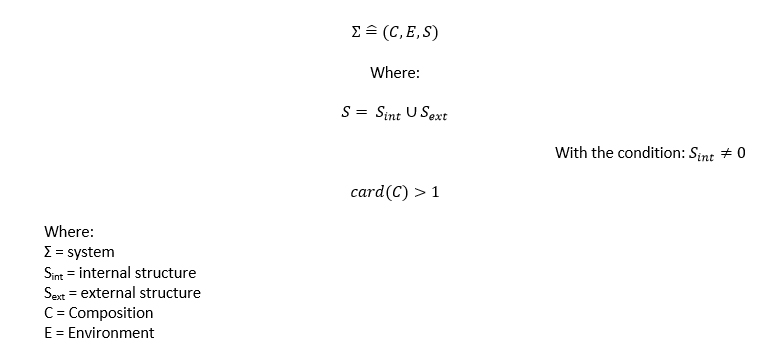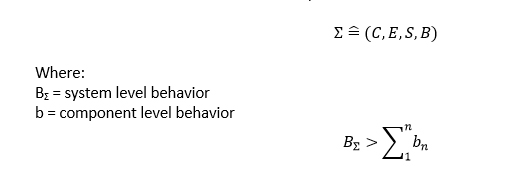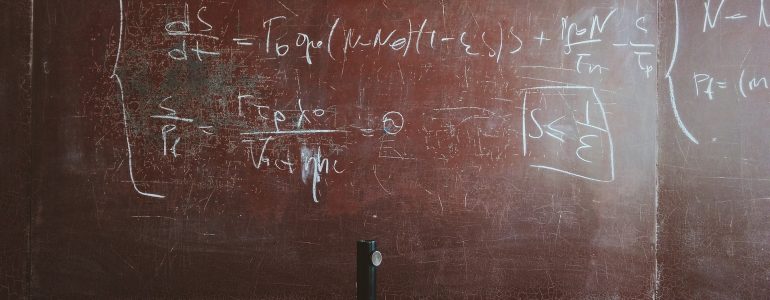There have been a number of attempts at generating a mathematical definition of a system, dating back to at least Ludwig von Bertalanffy’s now classic book, General System Theory, published in 1968. The systems engineering community would benefit greatly from such a definition, which would define a system precisely in the language of mathematics, which governs all other engineering disciplines.
There may not be a universally recognized definition yet for a set of fundamental laws or equations that govern systems engineering in the same way that there are the three laws of thermodynamics that set the foundation for thermal engineering or Ohm’s Law for electrical engineering. And yet, continuing to push toward such a goal would not only potentially increase the legitimacy of systems engineering as a discipline amongst its peers, it would also provide a consistent underpinning upon which all systems engineers could communicate and build up the practice.
There are a number of individuals and groups working toward the development and synthesis of a systems science or systems theory, and their work is worthy of its own investigation. For the time being, this blog will focus on a review of one mathematical definition of a system and discuss its implications. The one we’ll focus on is Patrice Micouin’s, as set out in his book, Model-Based Systems Engineering: Fundamentals and Methods. Micouin is a systems engineering consultant and researcher at Laboratoire des Sciences de l’Information et des Systèmes in Marseille, France as well as managing partner at Micouin Consulting. His definition builds upon the work of Mario A. Bunge, in particular volume 4 of his Treatise on Basic Philosophy. Bunge’s theory develops from that of von Bertalanffy, demonstrating a long line of evolutionary work in this field.
Micouin’s Systems Engineering Mathematical Definition
Micouin defines a system as a composite object characterized by its composition (fundamental lower-level elements such as subsystems or components), environment (the external system in which the system of interest operates), and structure (the internal relationships between elements and the external relationships between the system and its environment). He defines a system, Σ, as an object denoted by a triplet (C, E and S) such that:
What is this saying? It’s saying that the overall structure of a system is the union of the internal structure and the external structure: a system has both internal and external relationships. The cardinality of the set of its composition is greater than one: it is composed of more than one subpart. The system has an external environment. When E is empty, the system is a closed system—one that does not interact with an external environment. The opposite is an open system.
There are a couple of key points here that differentiate this definition from previous definitions. Prior definitions stated that a “system is a set of elements in interaction.” Micouin makes the point to note the difference between a set—a collection—of elements interacting in some way versus an object, which cannot be deconstructed without losing its fundamental defining characteristics.
A Comparison to Classical Descriptive Definitions
Let’s compare Micouin’s definition to a textual, descriptive definition of a system to see where there is alignment as well as any possible deviations.
We’ll use INCOSE’s definition of a system as our working definition:
A system is an arrangement of parts or elements that together exhibit behavior or meaning that the individual constituents do not.
Is Micouin’s definition sufficient to cover all of the fundamental elements of our textual definition? The term “arrangement” conveys interfaces or what Micouin describes as structure. “Parts or elements” is plural, which is covered by the cardinality of the compostion being greater than one. The textual description does not describe the environment in which the system operates, but other definitions do cover this, so we will consider those aligned. We can conclude that Micouin’s definition certainly covers the minimum physical characteristics.
But what about the behavioral statement: “. . . together exhibit behavior or meaning that the individual constituents do not?” The key defining aspect of a system is that “the whole is greater than the sum of its parts.” It is that concept of emergence which resides not only at the physical interfaces between internal and external elements, but also requires that items flow across the interfaces.
In the more general language, information (whether it be data, physical matter such as fluids or electrons, or force) must be transferred between the elements via interfaces or links. The combination of the links and items are what allow emergent behavior to come into existence.
Micouin’s definition does not include this fundamental characteristic of a system. Further refinement will be needed to include a behavioral aspect. This could be addressed via a revised definition where:
Summary
How does Micouin’s mathematical definition of a system compare to mathematical fundamental equations or laws in other disciplines? Well, it’s not a complete corollary, to be sure. Micouin’s definition, potentially modified as we described above, can be applied to something to determine whether or not it is a system. It can help us distinguish non-systems from systems. It cannot be used by the systems engineer as one of a number of fundamental equations that is used in the definition, design and development of a system. For that, we still have more work to do in the fields of systems science and systems theory. However, this is a good start and allows us to have tangible and concrete discussions on where the system boundary of our field and systems of interest resides.







Interesting from a philosophical point of view. I’m not able to see how this impacts on the real world, but intuitively it will.
One comment: the behaviour of the system is not necessarily greater than the sum of the behaviours of its components – it is quite possible (indeed probable) that at least some of those component behaviours will be restricted through the actions of other components – witness a governor on an engine.